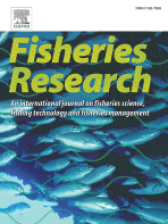Shark Research
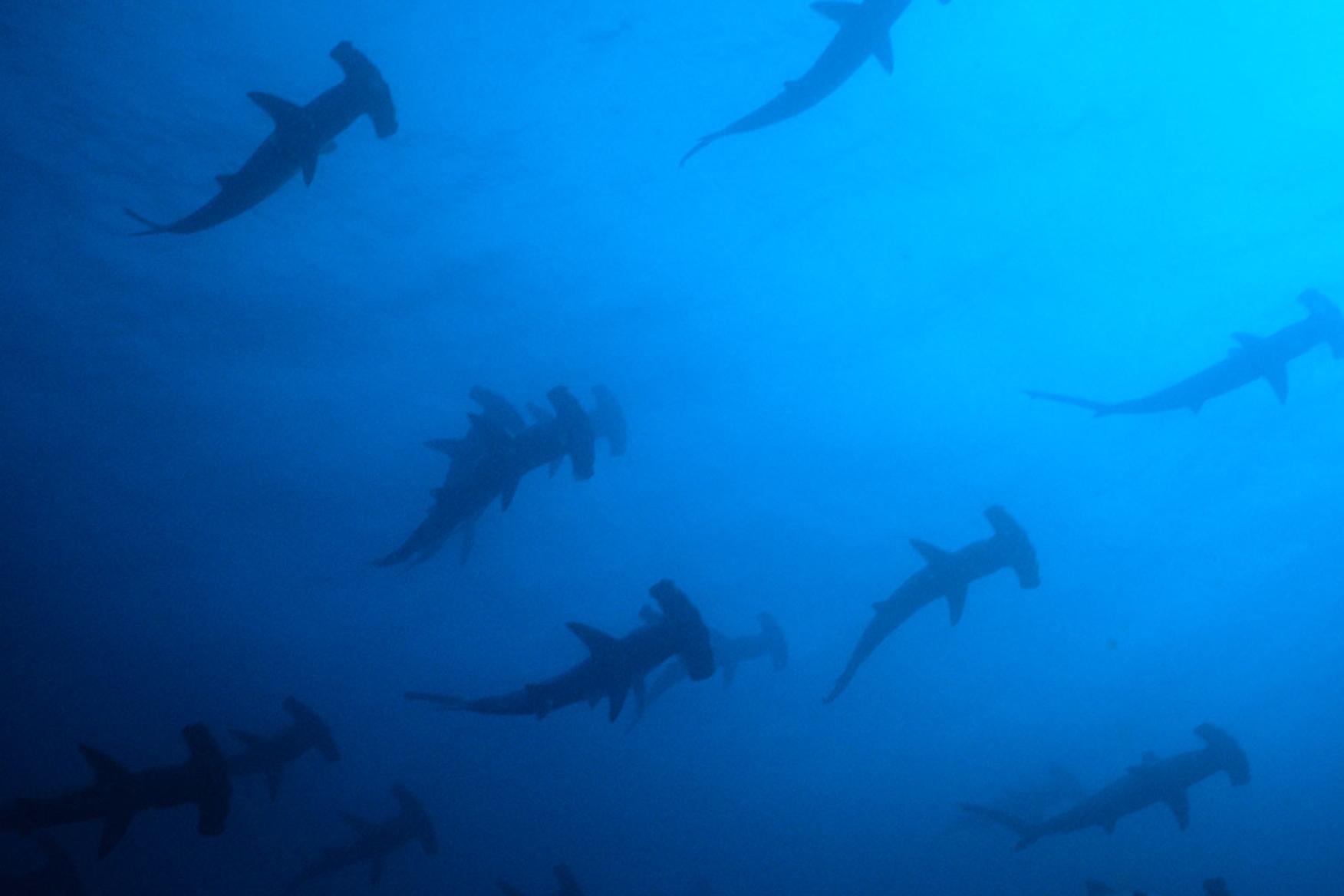
About this project
In oceanic ecosystems, large sharks function as top predators, and their abundance and distribution patterns may have cascading effects on the ecosystems they inhabit.
In oceanic ecosystems, large sharks function as top predators, and their abundance and distribution patterns may have cascading effects on the ecosystems they inhabit. Sharks are typically slow-growing, long-lived species that may use a variety of habitats over broad spatial scales. Their life history characteristics leave them vulnerable to exploitation and many shark populations worldwide are in decline. In the Gulf, declines of both oceanic and coastal shark populations have been reported.
This trend is disturbing because many shark populations have continued to decline despite the mandate to incorporate Essential Fish Habitat (EFH) in all Fishery Management Plans. This Act requires the development of fishery management plans to identify essential fish habitat, defined as those waters and substrate necessary to fish for spawning, breeding, feeding, growth, and maturity. Our research examines shark distribution, feeding habitats, and movement patterns in the Gulf and coastal waters of the Padre Island National Seashore.
Satellite Tracking
The overall goal of this project is to generate much-needed data on the ecology of sharks in the Gulf using state-of-the-art assessment techniques. We are using SPOT (Smart Position or Temperature Transmitting) tags made by Wildlife Computers to tag large sharks along the Texas coast. These tags are affixed to the dorsal fin and feature a wet/dry sensor that when dry will ping local satellites providing locations for that animal. These locations allow us to study the long-term movement patterns of species such as Tigers, Scalloped Hammerheads, and Shortfin Makos.
Another benefit of these tags is data are transmitted and received via Argos satellites eliminating the need to recapture the animal. Preliminary data suggests that the Flower Garden Banks may be an important area to several species, especially female Tiger sharks. We hope to tag additional sharks to learn more about their behaviors. View the tracks of our tagged sharks by clicking on the Shark Tracker.
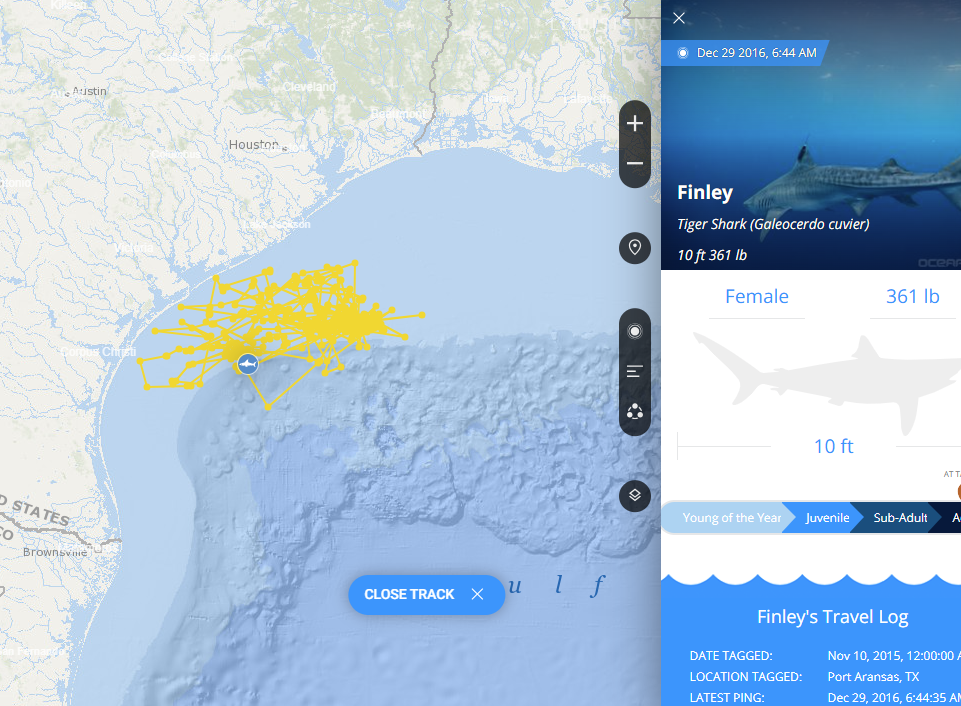
Passive Tagging
We are examining seasonal migration, habitat use, and movement patterns of coastal sharks through traditional mark-and-recapture techniques. Sharks of all species and sizes are tagged with external dart tags (also called spaghetti tags because of their noodle-like appearance). Tagged sharks are identified to species, measured, and released. The location of this initial capture event is recorded and can be compared to subsequent captures to estimate movement of the individual shark.
Each tag has a unique ID
ID's allow us to track individuals that have been recaptured and reported. This type of study elicits the cooperation of local recreational anglers because they provide a major source of recapture reports. As sharks are recaptured and reported we can determine patterns in capture locations and seasons to understand migration and habitat use by sharks. If you are interested in participating in this program, please contact us.
Acoustic Tagging
Through the use of state-of-the-art tracking instruments, we are examining habitat preferences of sharks throughout Texas waters. Internal acoustic tags are surgically implanted in sharks and these tags send out an acoustic signal (often called a “ping”) that transmits a unique ID number. When a shark swims into our network of hydrophones (known as the TEXANN array), the “ping” is recorded allowing us to track the movement of individual sharks.
These stations log data over multiple months so that we can determine how long sharks are resident in our network as well as examining movement patterns in daily and seasonal use. Previous research focusing on coastal movement found that juvenile Blacktip and Bull sharks preferred the nearshore habitat along north Padre and Mustang Islands. Currently, we have started acoustically tagging larger more pelagic species to determine their use of artificial and natural reefs in offshore waters.
Publications
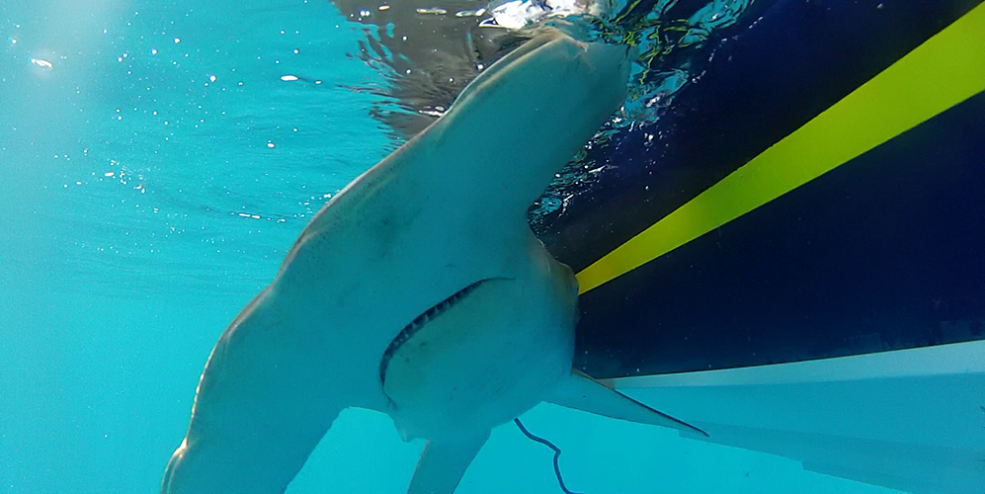
Hammerhead Shark "Wyatt" being tagged. Follow him on Ocearch's Shark Tracker!
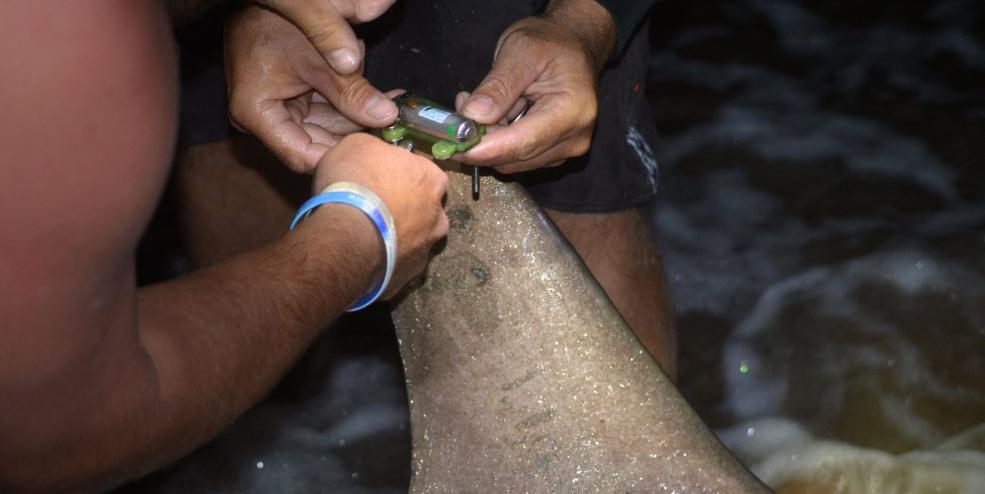
Satellite tagging a Scalloped Hammerhead Shark at Padre Island National Seashore.

CSSC staff tagging a Bonnethead Shark.

CSSC staff tagging a Bull Shark at Padre Island National Seashore.
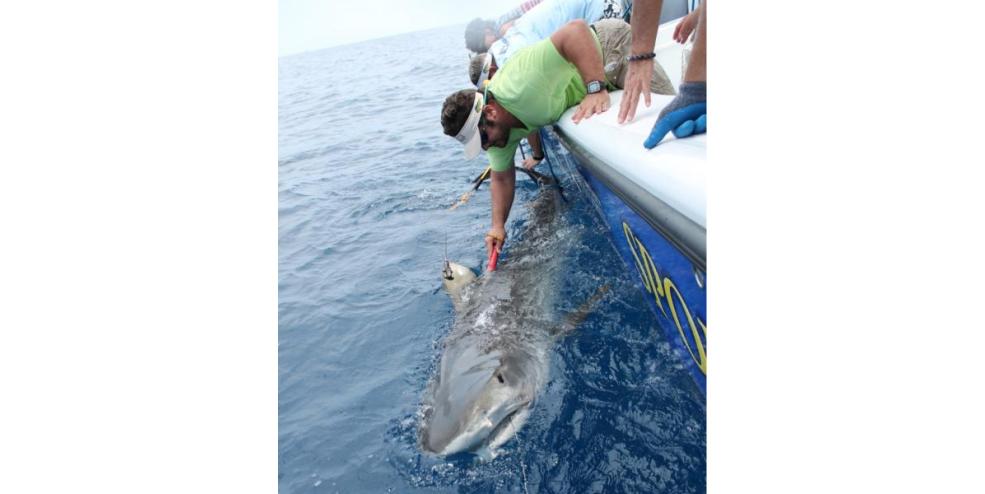
Sam Houston, a male Tiger Shark that was tagged by CSSC in August 2014
